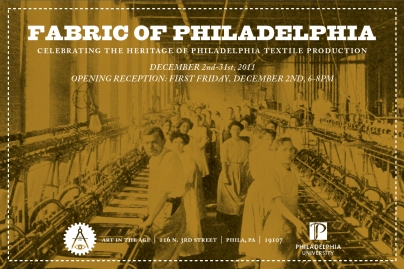Don't forget! The deadline for Inkjet Textiles 2011 is coming up on May 1, 2011.
Inkjet Textiles 2011 is an international textile design and art exhibition, open to all professional textile design and art practitioners utilizing digital inkjet textile printing technologies. This exhibition will be open to public in October 2011 at meltemBIREY gallery, curated by Hitoshi Ujiie, director of the Center for Excellence of Digital Inkjet Printing for Textile at Philadelphia University.
Since, it’s inception in the late 1990’s, digital inkjet printing technology has had a dramatic impact on a diverse range of creative applications for textile practitioners. Inkjet textile printing has affected both the design world, and the art and craft community, where it is becoming an innovative method of producing refined surface explorations. Throughout its development phase, digital inkjet printing has created new design business models, and has been regarded as one of the most sustainable green printing processes. At the same time, this technology has generated new creative design styles, which cannot be visualized by any other traditional printing technologies.
Inkjet Textiles 2011 seeks new printed textile design, which demonstrates innovative and creative styles, and encourages one of a kind, prototype or commercially produced textile submissions.
Submission Guideline:
The work has to be original and utilized by inkjet textile printing technology. The size of the final work should not be larger than 7 feet in length and 15 feet in width.
Each artists / designers / craft practitioners can submit maximum of 3 pieces of artwork for selections. The work should be prepared in Jpg format and the file size should be no larger than 5 MB. For details or multiple files of the same work, you can submit 5 files in total.
Timeline:
Entry Deadline: 1 May 2011
Selection Announcement: 1 June 2011
Exhibition Date: 5 October - 1 November 2011




























